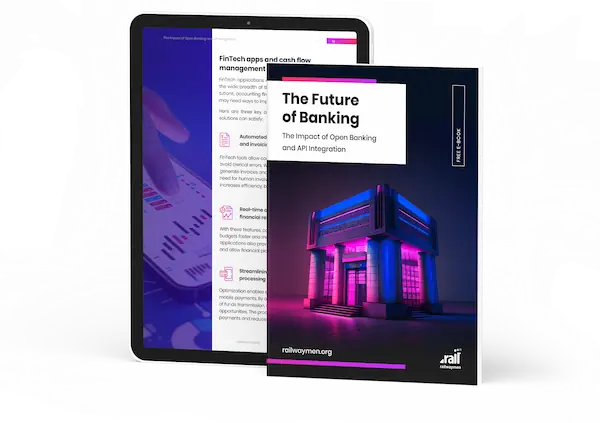Open banking has transformed the financial industry by allowing customers to share their financial data with third-party providers securely. Payment systems have advanced dramatically since the advent of open banking APIs. Application Programming Interfaces (APIs) enable the secure and dependable integration of payment systems with open banking services, allowing for faster and more efficient transactions.
In this article, we will explore how Open Banking APIs are integrated into payment systems and the benefits of this integration. We will discuss the challenges that companies may face during the integration process, as well as the best practices for overcoming them. In addition, we will look at the implications of this integration as well as the future of payments and the financial industry.

Table of Contents:
1. What exactly is Open Banking, and how does it relate to Bank APIs?
1.1. What are the types of APIs?
1.3. What is the difference between API and open banking?
2. Regulatory Landscape for Open Banking APIs and payment systems.
3. How to integrate Open Banking APIs with Payment Systems.
4. Opportunities and Benefits of open banking APIs.
5. Challenges of integrating Open Banking APIs.
6. Future Trends in Open Banking and Payment Systems Integration.
What exactly is Open Banking, and how does it relate to Bank APIs?
Open Banking is a concept in the financial services industry that refers to the usage of open Application Programming Interfaces (APIs) that allow third-party developers to access financial information and transactional data held by banks and other financial organizations. This data can contain account information, balances, transactions, and other financial details that can be used to provide clients with new services, products, and applications.
Bank APIs are an important component of Open Banking, since they enable the technical capabilities to access financial information and begin transactions via secure APIs.
Banks and financial institutions typically make these APIs available, allowing developers to create innovative products and services that harness banking data to provide better user experiences.

What are the types of APIs?
There can be distinguished the three types of API currently used in finance:
#Internal APIs
Within a single business, these APIs are utilized to allow diverse systems and applications to connect with one another. Internal APIs are inaccessible to outside parties and are used to simplify communication between different parts of a company.
#Private APIs
These APIs are made available to a small group of partners and trusted third-party developers who have been granted access to the APIs. Private APIs are used to provide secure communication between banks and their partners, such as payment gateways or FinTech companies.
#Open APIs
These are open to the public APIs and can be accessed by anybody. Open APIs are used to foster financial industry innovation and competitiveness by allowing developers to create new services and software products that exploit banking data.
How Do APIs Work?
Application Programming Interfaces enable software applications to interact with one another by offering a set of protocols, tools, and definitions.
APIs operate on a request-response model, in which a client sends a request to an API, and the API processes the request and returns a structured response in JSON (JavaScript Object Notation) or XML (Extensible Markup Language).
They can be used for a variety of purposes, including connecting multiple systems within an organization and allowing third parties to create new apps and services that can access and manipulate data from many sources. APIs provide increased interoperability and can assist speed innovation in a range of industries by providing a standardized way for apps to connect with one another.

What is the difference between API and open banking?
Application Programming Interfaces and Open Banking are related concepts, but they have different meanings and functions.
Open Banking is a regulatory movement requiring banks to make their data and services available to third-party developers via APIs. Open Banking is intended to increase competition and innovation in the banking industry, while also providing individuals with greater control over their financial data.
In turn, an API is a collection of protocols, routines, and tools used in the development of software applications that allow systems to interface with one another, share data, and functionality in real time.
Regulatory Landscape for Open Banking APIs and Payment Systems
Because different jurisdictions have varied laws and regulations governing financial services and data protection, the regulatory landscape for open banking APIs and payment systems differs by country and area. However, there are some recurring patterns and tendencies in the worldwide regulatory landscape.
-
Payment Services Directive 2 (PSD2) - is a European Union regulatory framework that compels banks to provide open APIs for third-party access to customer accounts and payment services. The second payment services directive also adds new requirements for customer verification, fraud prevention, and accountability for unlawful transactions.
-
Consumer Financial Protection Bureau (CFPB) - A US agency of the US federal government has issued policies and guidelines that promote data sharing and access to financial information through APIs while protecting consumer privacy and data security.
-
Consumer Data Right (CDR) - an initiative requires banks and other companies to provide customers with access to their data through APIs.
The legal landscape for open banking APIs and payment systems is continually evolving, and organizations must keep up with the newest advancements and comply with applicable laws and regulations to participate in this expanding sector.

How to integrate Open Banking APIs with Payment Systems?
The process of open banking API integration with payment systems necessitates careful design that considers technological requirements as well as security considerations.
Here are some general steps to follow:
-
Step 1 - Determine which open banking APIs and payment systems to integrate. To ensure compatibility, review the documentation and system requirements for both systems.
-
Step 2 - Make sure you have the appropriate technical knowledge, or employ an experienced developer or development team to handle the integration.
-
Step 3 - Establish a secure and dependable communication connection between open banking APIs and the payment system. This can be accomplished by utilizing secure protocols such as HTTPS and OAuth 2.0.
-
Step 4 - Create and test the integration to ensure it matches your needs and works as intended. This is also an opportunity to discover and resolve any concerns before going live.
-
Step 5 - Put in place security procedures to safeguard sensitive data and transactions. Encryption, tokenization, and other security procedures are examples of this.
-
Step 6 - Monitor the integration and undertake frequent testing and maintenance to verify that it continues to function properly and securely.
-
Step 7 - Ensure that relevant legislation, such as the General Data Protection Regulation (GDPR) and the Payment Services Directive 2 (PSD2), are followed.

Opportunities and Benefits of Open Banking APIs
Open Banking APIs provide financial institutions, businesses, and consumers with a range of opportunities and benefits. We decided to give a few examples:
-
Innovation - Developers can use open banking APIs to create new financial goods and services, which can improve the consumer experience and promote competition in the financial market.
-
Customer convenience and improved user experience - Customers can manage their finances more easily by having a single view of their accounts across multiple institutions. Interfaces can also provide financial institutions with more profound and valuable insights into their customers' behavior, preferences, and needs, allowing them to offer more personalized and relevant products and services.
-
Cost-cutting measures - APIs allow for the reduction of development costs for new financial products and services by using existing infrastructure and data.
-
Improved risk management - By providing real-time access to consumer data, Open Banking APIs can help financial institutions better manage risk.
-
Improved security - To protect consumer data and transactions, Open Banking APIs employ current protocols and security technologies such as OAuth 2.0 and TLS.
Considering all the benefits and opportunities outlined above, open banking APIs are an important tool to drive innovation, improve customer service, and increase competition in the financial industry.

Challenges of integrating Open Banking APIs
While open banking APIs offer numerous benefits, integrating them into existing systems can be challenging for financial institutions and businesses. Below you can find some of the most enduring challenges:
-
Systems from the past - Many financial institutions and businesses have old systems that are incompatible with modern APIs. This can make integrating Open Banking APIs complex and may necessitate large updates to current systems.
-
Data Integrity and Quality - To function properly, Open Banking APIs require accurate and consistent data. However, the quality and consistency of data can vary greatly among financial institutions, making it difficult to construct a unified view of consumer data.
-
Compliance with Regulations - GDPR and PSD2 are severe regulatory requirements for Open Banking APIs. Compliance can be complicated and time-consuming, and failure to comply can result in hefty fines.
-
Security threats - To protect consumer data, open banking APIs require secure data transmission and storage. Financial institutions and businesses must ensure that adequate security measures are in place to prevent unauthorized access or data breaches.
-
Users Consent - To access their data, Open Banking APIs require the customer's permission. Financial institutions and businesses must guarantee that client consent is obtained in a clear and transparent manner, and that customers have the ability to withdraw consent at any time.
Integrating Open Banking APIs can be difficult and time-consuming, requiring extensive technical knowledge and resources. For successful integration, financial institutions and businesses must carefully evaluate the challenges and design a comprehensive strategy.
Future Trends in Open Banking and Payment Systems Integration
The integration of open banking APIs with payment systems opens up a tremendous opportunity for financial institutions and businesses to improve their goods and services, improve client experiences, and drive innovation. It is not, however, without problems, such as regulatory compliance, security issues, and technical complications.
As the industry evolves, it is critical to stay current on the newest trends, best practices, and emerging technology to ensure a smooth integration and the best possible results for clients. Increased acceptance of open banking, expansion of payment system integration, and a stronger emphasis on data intelligent analytics, security, and compliance are likely to determine the future of open banking and payment system integration. Financial institutions and enterprises can position themselves for success in a fast changing industry by staying ahead of these trends.
Conclusion
As a software house, we understand the importance of open banking APIs and payment systems integration in today's fast-paced financial industry. If you are looking to integrate these APIs into your business, we can help you navigate the complex regulatory landscape, overcome technical challenges, and unlock the full potential of these innovative technologies.
If you are interested in a project that we have developed, visit our Case Study section and contact us today to learn how our expertise in open banking and payment systems integration can help you stay ahead of the competition and deliver exceptional value to your customers.
Let's work together to build a better future for your business.
It's time to explore the future of banking
Are you interested in the future of banking and how it will affect your business? Our e-book "The Future of Banking: The Impact of Open Banking and API Integration" provides a detailed analysis of these changes. With thought-provoking insights and expert analysis, you will be able to prepare for the challenges and opportunities ahead.
DOWNLOAD NOW






